Bucharest – The Romanian Capital I rediscovered
Hello everyone, I’m back and will be writing about Bucharest, a city I rediscovered again after 10 years.
I’m half-Romanian and am therefore also trying to get in touch with a country that I have never lived in, but built a relationship with on my own terms, through friends and art.
My mother was born in Bucharest in the 1950s and fled Romania with her parents in the 1970s. She grew up in communism and left for a better life in the West; she ended up moving to Munich, where she still lives to this day.
The first time I travelled to Romania was in 2005, we did a family roadtrip all around the country and ended up in Cetate, a family estate my parents got back through a lot of work. The property had been expropriated by the Romanian state during communistic times.

© Antonella Grevers
However, I will only be writing about Bucharest in this post.
I arrived in Bucharest around mid-September and stayed for 8 days, wanting to have a lot of time exploring the city, which I managed to do. The art wasn’t the only thing I wanted to see, I wanted to get a feel of the city as well.
Bucharest is quite a big city having a population of 1.8 m citizens. It’s obvious that the city was under communistic regime, especially through the buildings that were constructed.
But Bucharest does have beautiful sites as well, especially the Old Town, which has lovely architecture, lots of little cafes, restaurants, stores as well as some galleries.

© https://www.viator.com/tours/Bucharest/Wine-tasting-in-Bucharest-Old-town-bonus-cheese-platter/d22134-42034P3
I visited the National Museum of Art of Romania which is located in the Royal Palace in Revolution Square in the city centre. It comprises collections of medieval and modern Romanian art, as well as the international collection assembled by the Romanian royal family. The museum also has a modern section where works of Constantin Brâncuși and other Romanian artists are shown.
One thing that always fascinates me are the relics of orthodox churches especially the Templon (below) and the mosaics placed on the side of the walls and the dome.
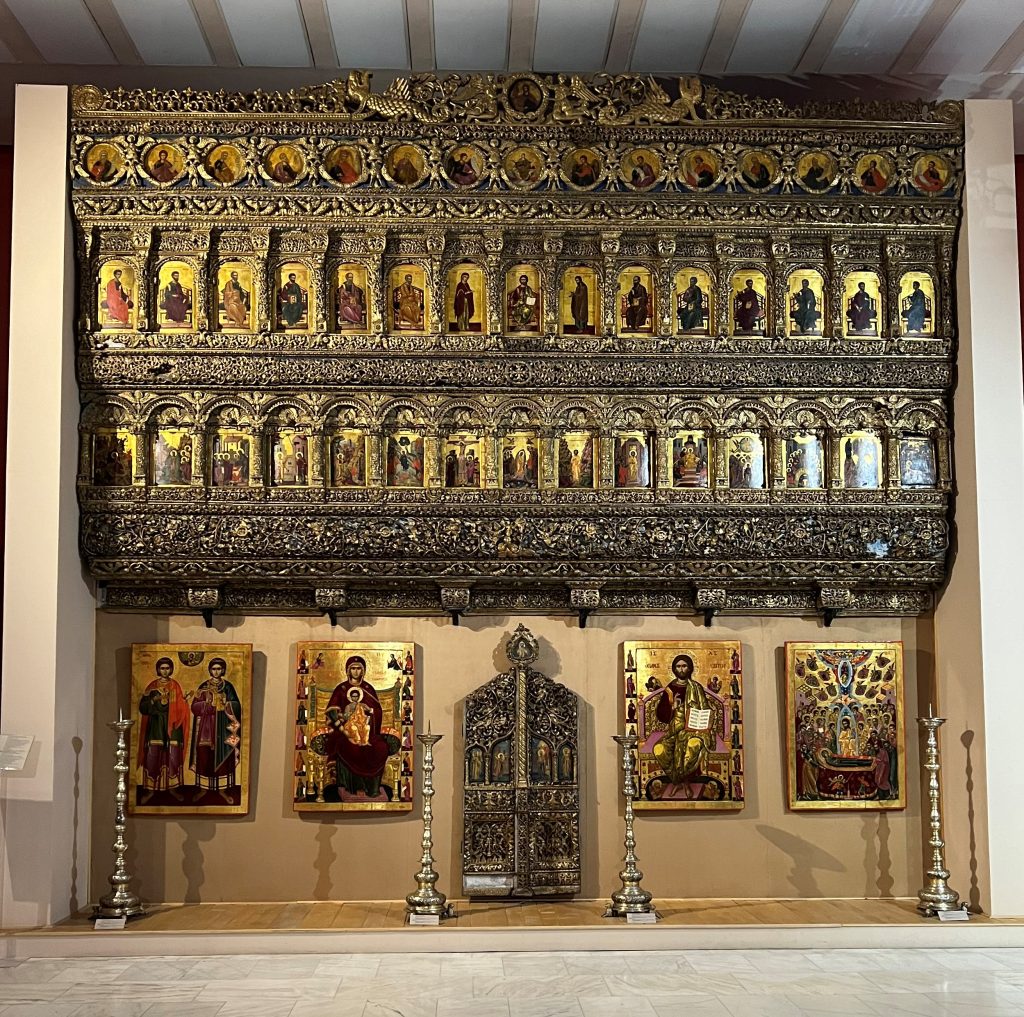
© Antonella Grevers

© Antonella Grevers
After visiting the museum I went to the Memorial of Rebirth that commemorates the struggles and victims of the Romanian Revolution of 1989, which overthrew Communism.
The memorial complex was inaugurated in August 2005 in Revolution Square, where Romania’s Communist-era dictator, Nicolae Ceaușescu, was publicly defeated in December 1989. It was designed by Alexandru Ghilduș and features a 25-metre-high marble pillar as its centrepiece, reaching up to the sky, upon which a metal “crown” is placed.
Its original name was “Eternal Glory to the Heroes and the Romanian Revolution of December 1989” (Glorie Eternă Eroilor și Revoluției Române din Decembrie 1989); implying Romania’s rebirth as a nation after the collapse of Communism.
The cost was about 5.6 million lei (approximately €1.2 million).
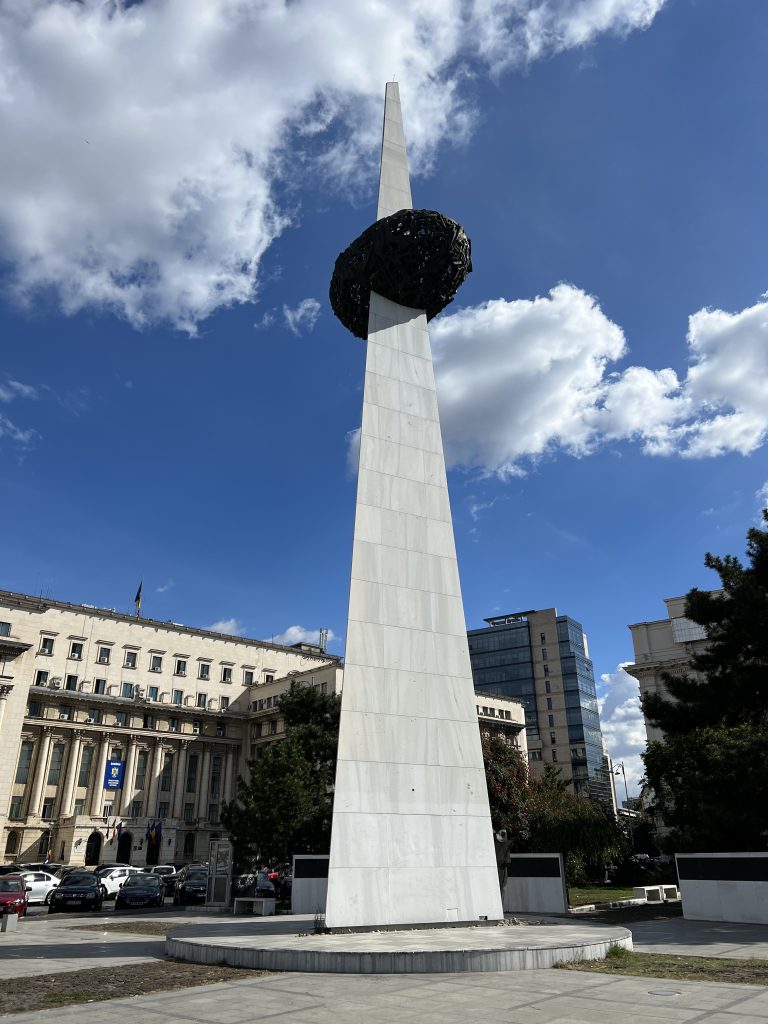
© Antonella Grevers
The next day I visited the Museum of Recent Art (MARe) which is a private, contemporary art collection owned by Roger El Akoury, who bought the building in 2007.
He started collecting art in 2012 and now counts more than 500 pieces, mostly paintings and sculptures, created from 1965 onwards to his collection. As there were no Romanian venues interested in showing his assortment, Mr El Akoury had the entire building, except the basement, torn down and then rebuilt exactly the same way from the ground up.
The museum opened to the public in 2018.

© https://www.archdaily.com/930978/mare-museum-of-art-ytaa-youssef-tohme-architects-and-associates

© Antonella Grevers
This work is part of the permanent collection and was created by an artist named Diet Sayler. In one of my other uploads I had a very interesting interview with him.
Sayler is of Romanian origins but left the country in the 1970s due to the communistic regime and not having the ability to express himself freely. He has been in living in Nürnberg since 1972 and is still making art.

© Antonella Grevers
Another museum I wanted to explore was the National History Museum of Romania (Muzeul Național de Istorie a României), founded in 1972, it is one of the most emblematic institutions of Romanian culture.
The museum is located in a historic building formerly the Postal Services Palace, in the old city center of Bucharest. The building was erected between 1894 and 1899 and designed by architect Alexandru Săvulescu (1847-1902), who drew his inspiration from the Federal Post Palace in Geneva, Switzerland.
The permanent displays include a plaster cast of the entirety of Trajan’s Column, the Romanian Crown Jewels, and the Pietroasele treasure.
A dedicated area was built just for the full size copy of Trajan’s Column Replica an extraordinary monument of Antiquity. I wasn’t even aware that it was located in Bucharest.

© Antonella Grevers
I always love visiting treasuries and the Romanian Crown Jewels surely didn’t disappoint with over 3,000 valuable items being on display. They are made of precious metals and gems belonging to civilizations that inhabited, over time, the current territory of Romania.
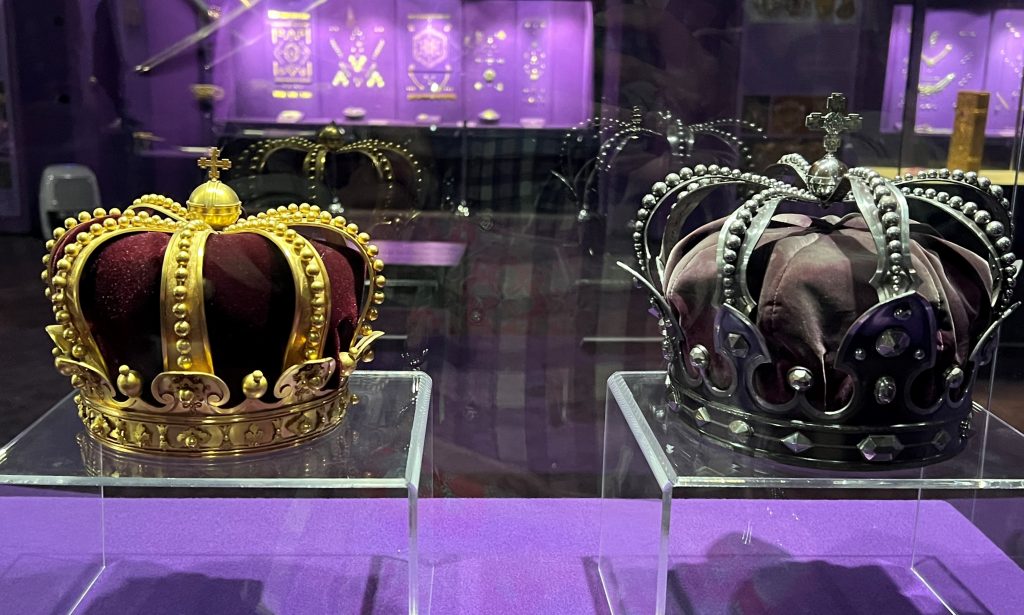
© Antonella Grevers
The Romanian “Steel Crown” (right) is the crown which was used for all the Romanian Kings’ coronations. It was cast from the steel of a Turkish cannon, captured by the Romanian army during the Siege of Plevna in the Romanian War of Independence (1877-1878). King Carol I decided the crown be made of steel, not gold, to symbolise the bravery of Romanian soldiers.
The Pietroasele Treasure is the name given to a hoard of gold artifacts that was discovered by two peasants in 1837 in an ancient grave in Pietroasele, Buzău County, Romania, while they were cutting limestone in a quarry for the building of a bridge.
The assumption is that the golden objects belonged to the Visigoths (Germanic migratory nomadic tribe that arrived in the region of the Black Sea by 3rd century AD). The pieces are dated between the late 4th century AD and early 5th century AD, and were buried around the middle of the latter. Out of the 22 golden pieces found only twelve have survived.

© https://www.thevintagenews.com/2016/11/24/the-pietroasele-treasure-late-4th-century-hoard-of-gothic-gold-artifacts-discovered-in-an-ancient-grave-in-romania/?firefox=1
After visiting the museum I went into the Old Town of Bucharest and looked at the Stravopoleos Monastery (Manastirea Stavropoleos) which is an Eastern Orthodox monastery for nuns.
The name Stavropoleos comes from the Greek language and means “The city of the Cross”. The church was built in 1724 in the Brâncovenesc style, during the reign of Nicholas Mavrocordatos (Prince of Wallachia, 1719-1730), by the archimandrite Ioannikios Stratonikeas, a Greek monk from Pogoniani. The churches patrons are St. Archangels Michael and Gabriel.
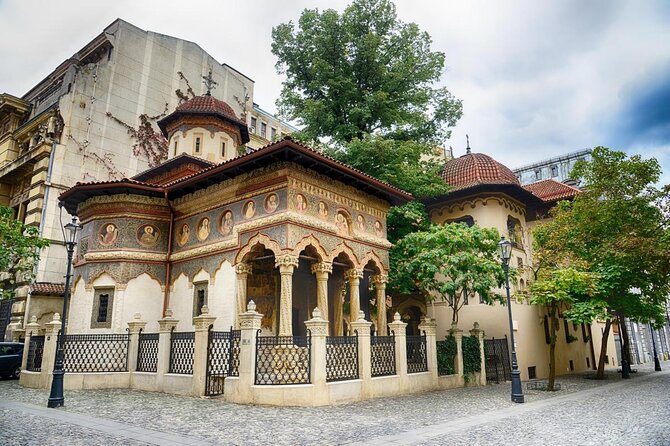
© https://www.viator.com/Bucharest-attractions/Stavropoleos-Church-Biserica-Stravrapoleos/overview/d22134-a21669

© Antonella Grevers
In the evening I visited Mogoșoaia which is located 10km from Bucharest.
The Mogoșoaia Palace was built between 1698 and 1702 by Constantin Brâncoveanu in what is called the Brâncovenesc style. The palace bears the name of the widow of the Romanian boyar Mogoș, who owned the land it was built on.

© Antonella Grevers
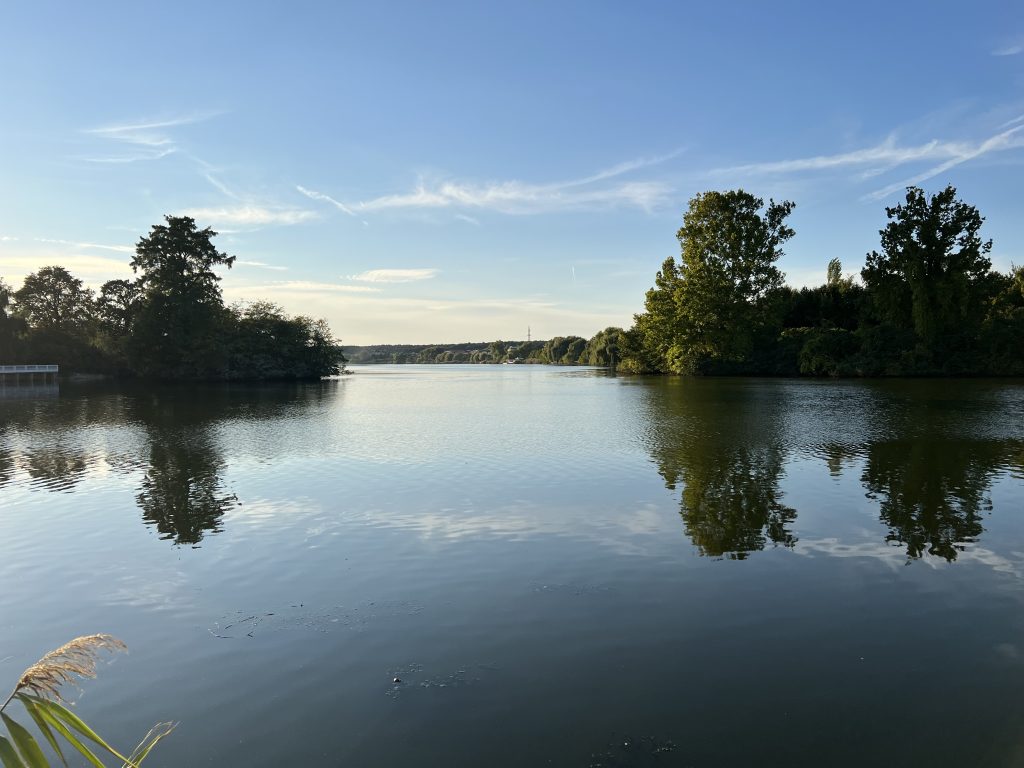
© Antonella Grevers
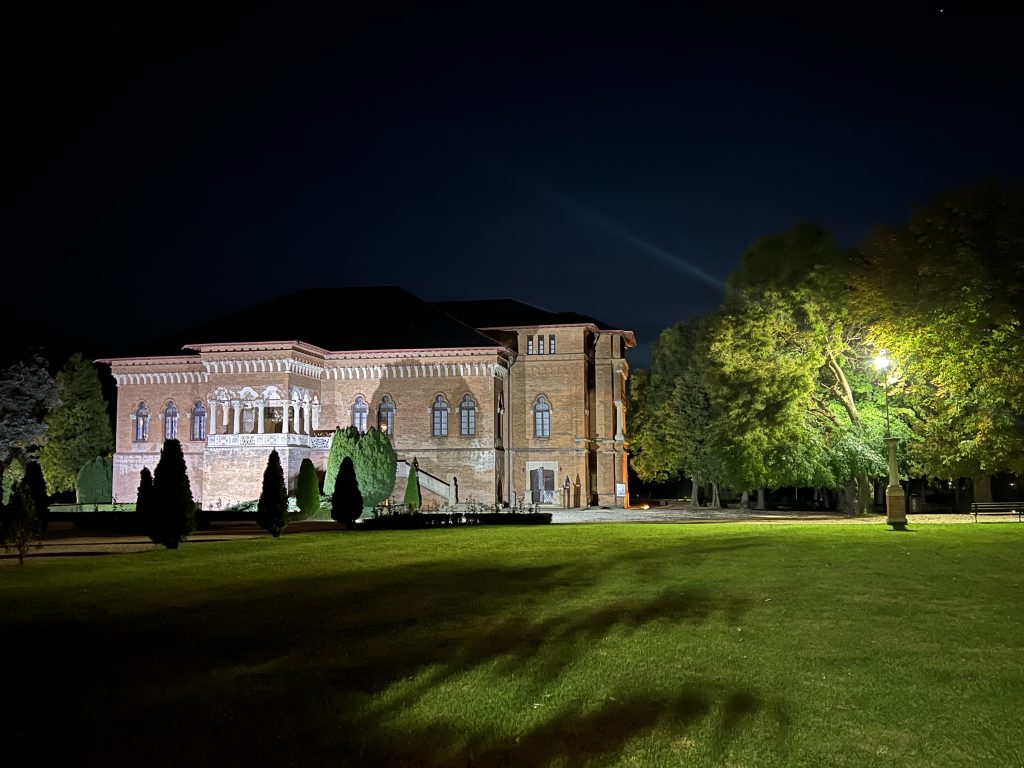
© Antonella Grevers
I went there because the exhibition Loc de Joacă by the artist Mihail Coșulețu had its opening. The show displayed games and toys of the artist’s son as well as a car racetrack. It took place in one of Mogoșoaia’s houses.
For more information about the artist, visit his Instagram profile: https://www.instagram.com/mihailcosuletu/.

© Mihail Coșulețu
Another day I drove by the Palace of Parliament (Palatul Parlamentului). The construction was ordered by dictator Nicolae Ceauceșcu (1918-1989). It is now the seat of the Romanian Parliament; the lower house since 1994 and the upper house since 2004. The National Museum of Contemporary Art is also located in one of the new glass wings.
The Palace has a height of 84 meters, a floor area of 365,000 m2 and a volume of 2,550,000 m3. The Palace of Parliament is the heaviest building in the world, weighing about 4,098,500,000 kilograms (4.10 million tonnes), also being the second largest administrative building in the world after the Pentagon.
It was built by a total of 700 architects under the chief architect Anca Petrescu (1949-2013).

© https://www.pinterest.de/pin/585608757778091855/
Ceauceșcu wanted to reconstruct Bucharest and therefore demolished historical buildings, among others, the National Archives, Mihai Vodă Monastery and the Brâncovenesc Hospital. Due to this 40,000 people had to be relocated from the area as well. The building cost a total of €4 billion.
On my last day in Bucharest I wanted to visit some galleries, as the city has an up and coming art scene and I was curious as I’m working in this area as well.
The first gallery I looked at was Suprainfinit Gallery which was founded in Bucharest in 2015 by Suzana Vasilescu.
The gallery focuses mostly on conceptual art practices, prioritising Eastern and Central European emerging and mid-career artists. Its focus is on large scale installations, like the exhibition holding a shell, walking a line by Rebekka Ana Aimée Stuhlemer, that I saw in September of last year.
The show displayed a series of four site-specific paintings merging with each other, done in multiple layers. The artist worked outside with the textiles and created the first layers in different surroundings, some by the river Rhine and others by the beach or lakes. Her brush strokes show her intuitive feeling for colour and how she is able to connect the canvases with each other, while also taking into account the environments in which they were made.
Rebekka Ana Aimée Stuhlemer was born in Berlin in 1995, she works in Berlin and Düsseldorf. She studied Fine Arts at Brunswick University of the Arts (Canada) and at the Kunstakademie Düsseldorf.
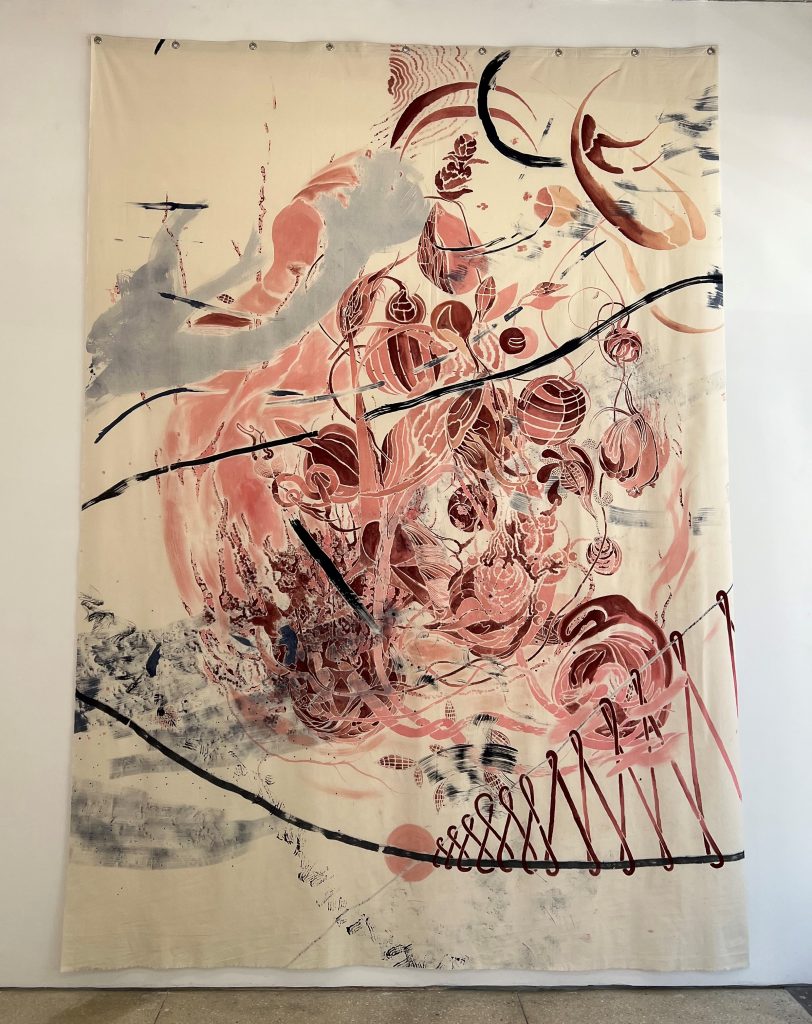
© Antonella Grevers
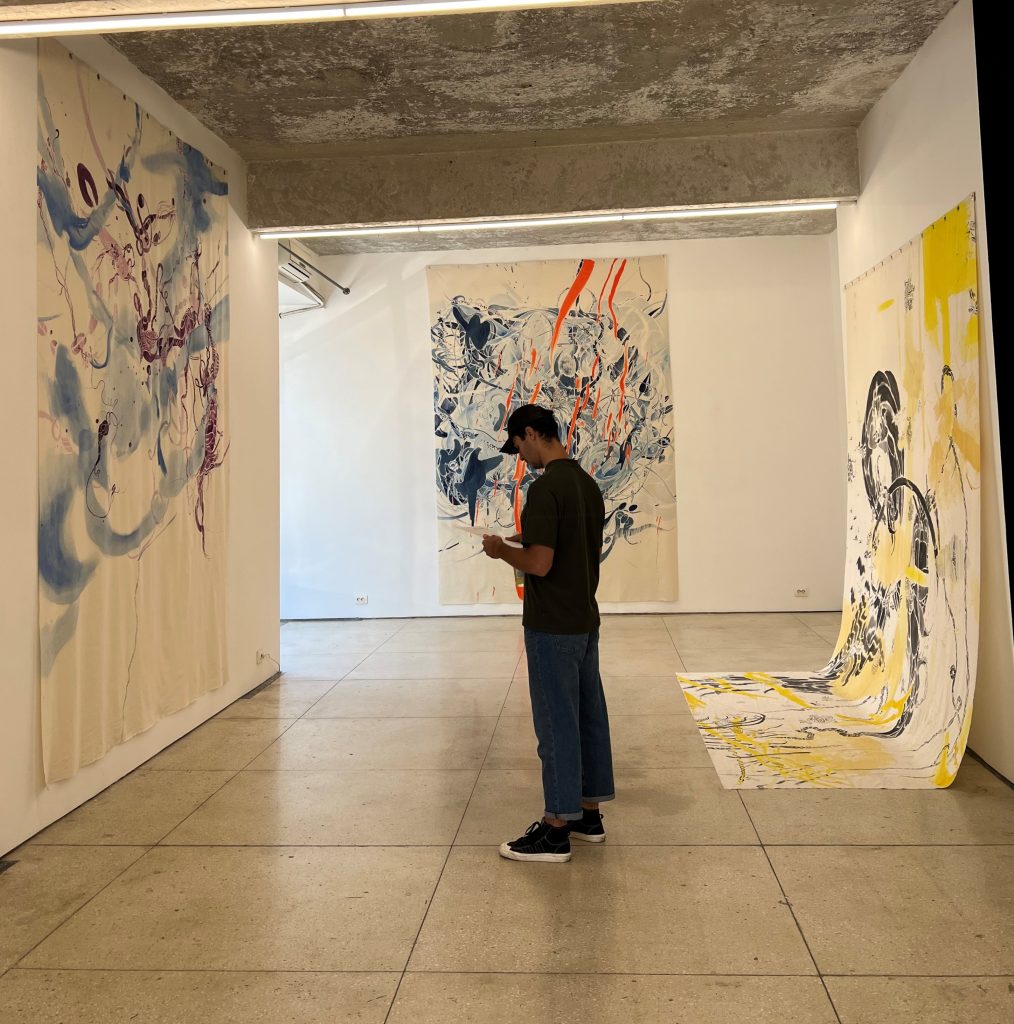
© Antonella Grevers
The next gallery I visited was Gaep Gallery, which was founded in 2014 by Andrei Breahnă and Raluca Șoaita.
GAEP was first called Eastwards Prospectus and prioritised Eastern European artistic practices. The gallery changed its name in 2019, due to focusing more on the international market and because of the connections established over time with the international scene of contemporary art.
The exhibition I saw was an all female group-show called ECOLOGIES OF REPAIR, concentrating on the environment and sustainability. All of the artists shown have various preoccupations and artistic interests, working with natureculture concepts, organic materialities, or specialised approaches to environmental protection and preservation. The exhibition presents a series of solutions on altering the world through different types of techniques.
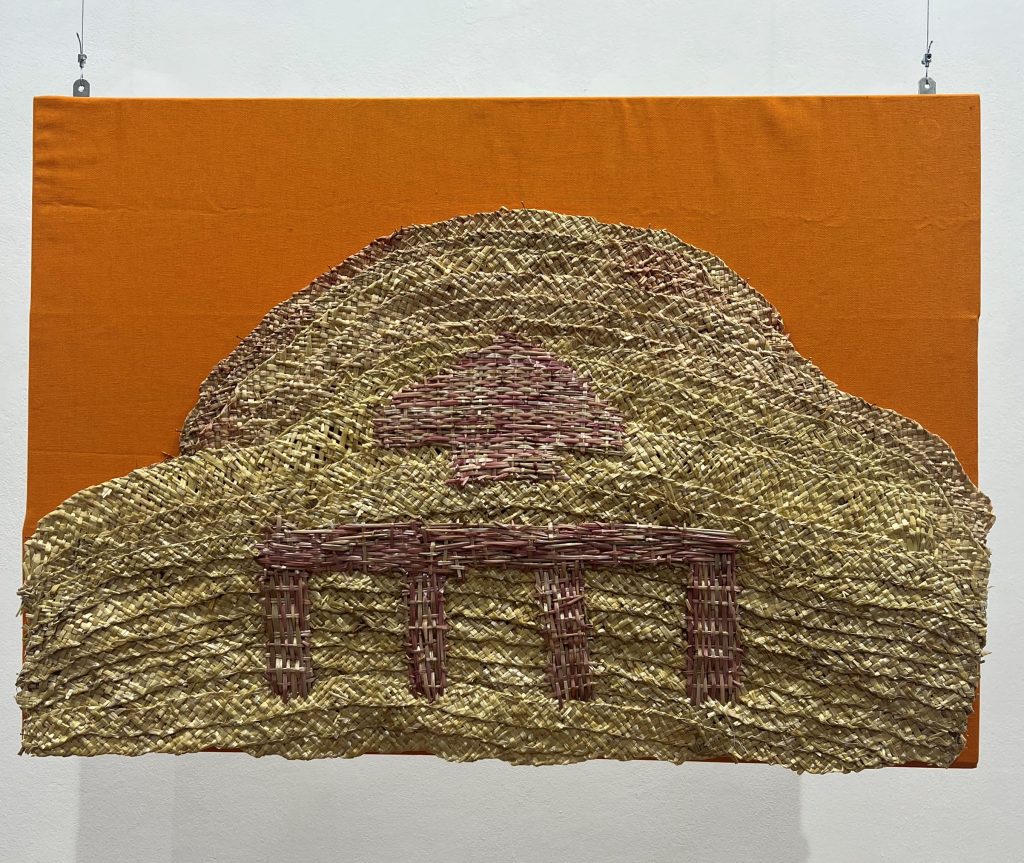
© Antonella Grevers

© Antonella Grevers
After visiting these two galleries I went to Strada Băiculești 29, which is an old industrial area that was overtaken by many different cultural and artistic institutions. For example two well-known galleries Nicodim Gallery and Sector 1 Gallery as well as other art spaces for recently graduated art students. Not all spaces were open but I saw a few interesting artworks which I’m going to share with you.
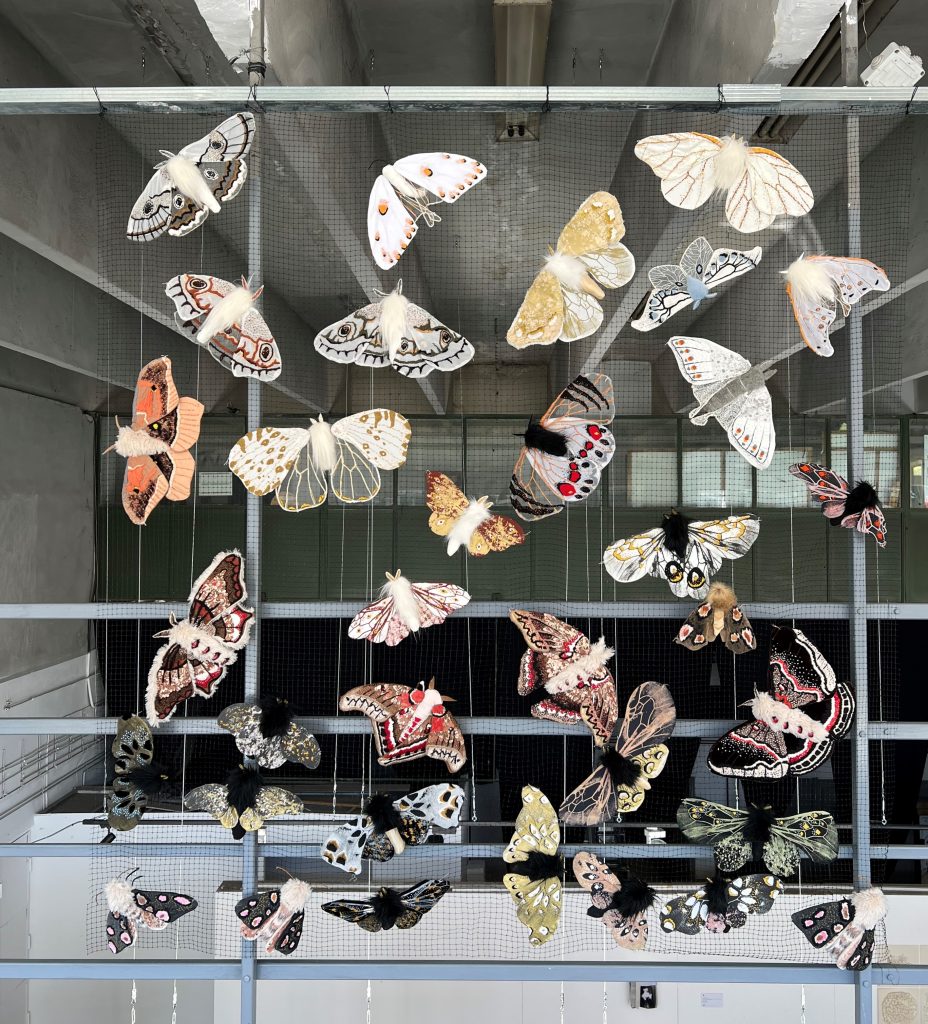
© Antonella Grevers
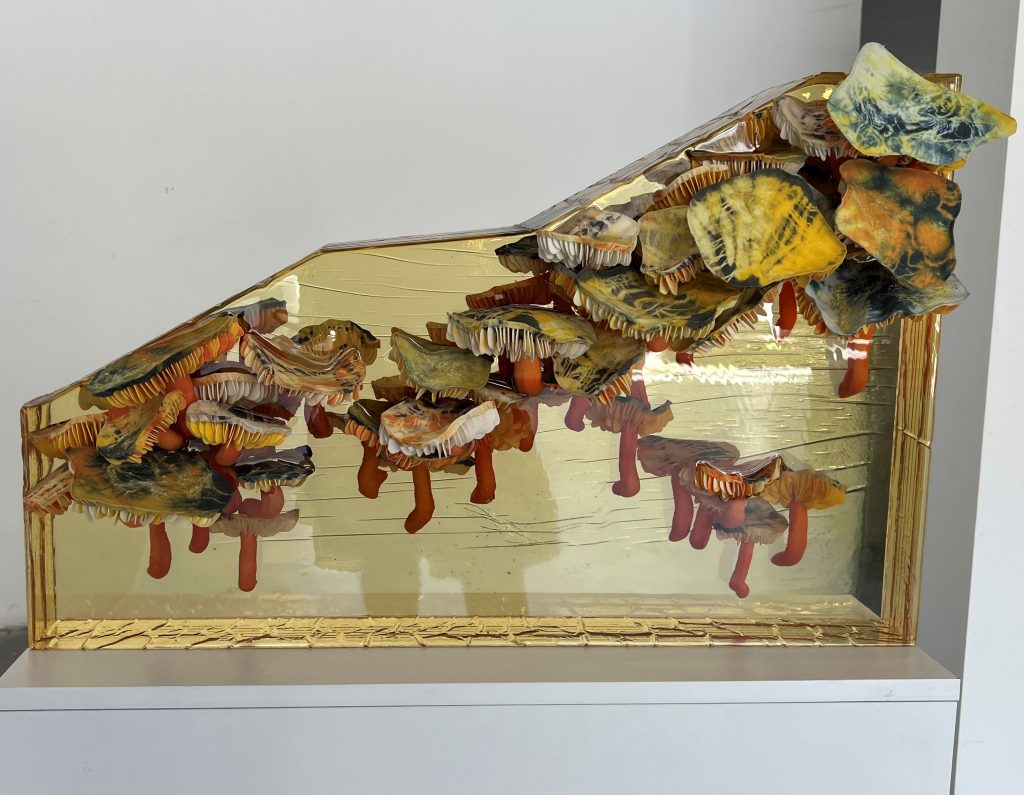
© Antonella Grevers
I want to finish this post by writing about the beautiful park I visited on my last day in Bucharest!
King Michael I Park (Parcul “Regele Mihai I”), formerly Herăstrău Park (Parcul Herăstrău), is a large park on the northern side of Bucharest, around Lake Herăstrău. It has an area of about 187 ha, of which 74 ha is the lake.
After the former King of Romania Michael I had died on 5 December 2017, the park was renamed “King Michael I Park” in his honour.

© Antonella Grevers
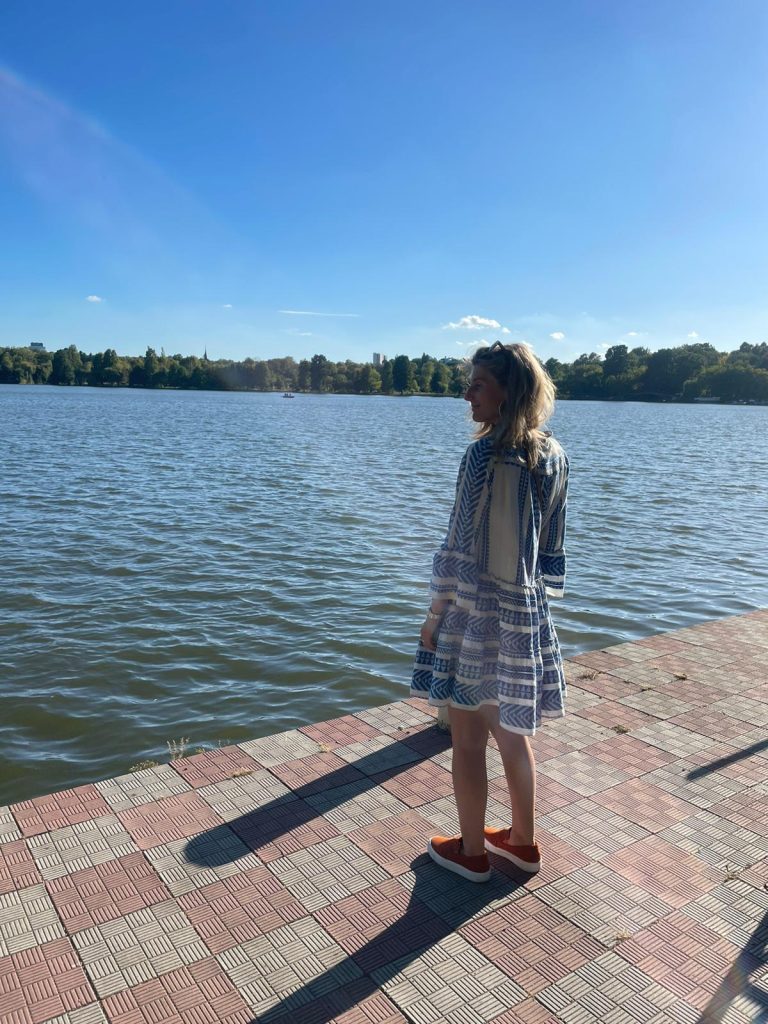
© Antonella Grevers
Thank you for reading this blog! I hope you enjoyed getting to know Bucharest a little bit and that it inspired you to visit the city as it is definitely worth it. Maybe it also gives you an entry to explore more Eastern European countries which all have interesting histories as well. Until next time!
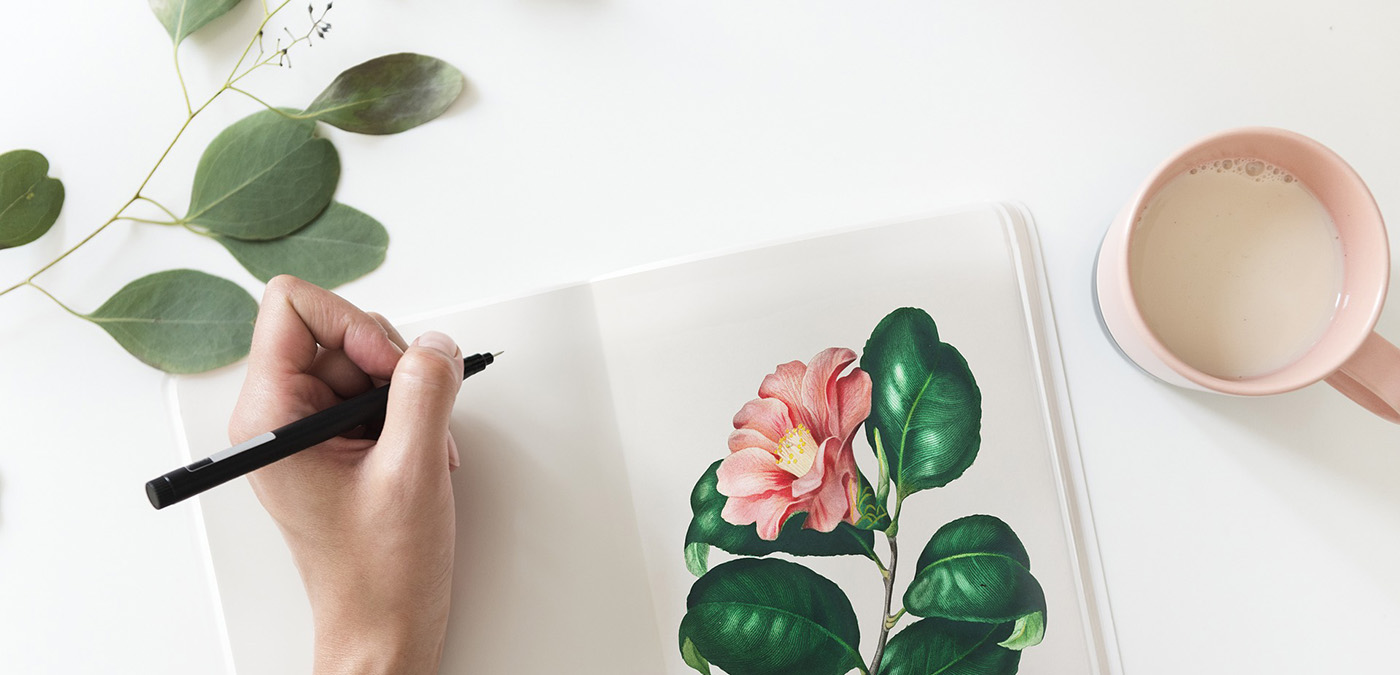
-
-
3 years
Tagged #andreijemec, #centreofgraphicarts, #contemporaryart, #cukrarna, #jozeplecnik